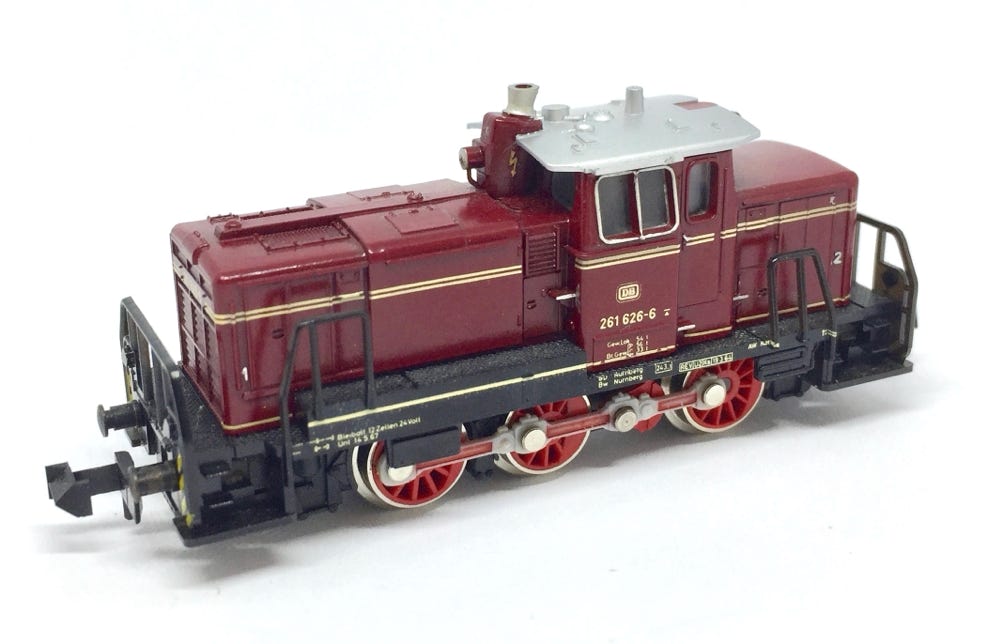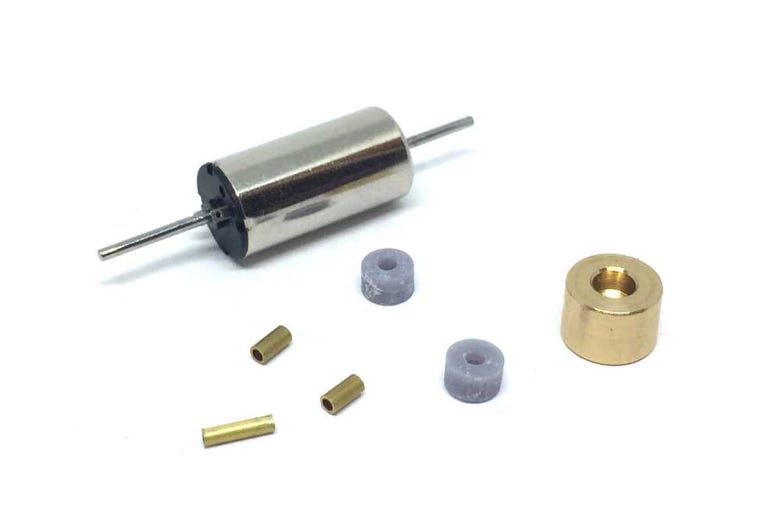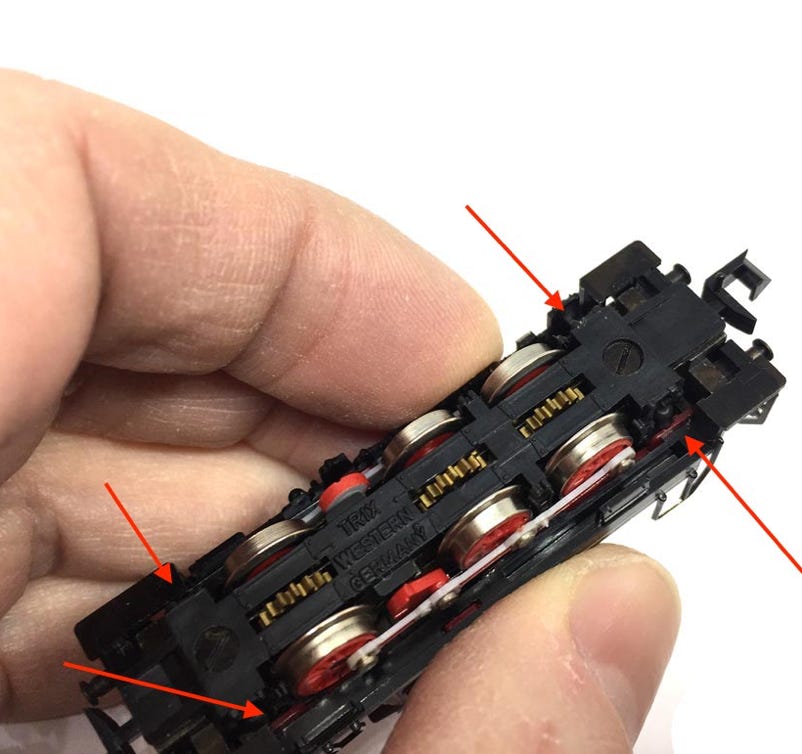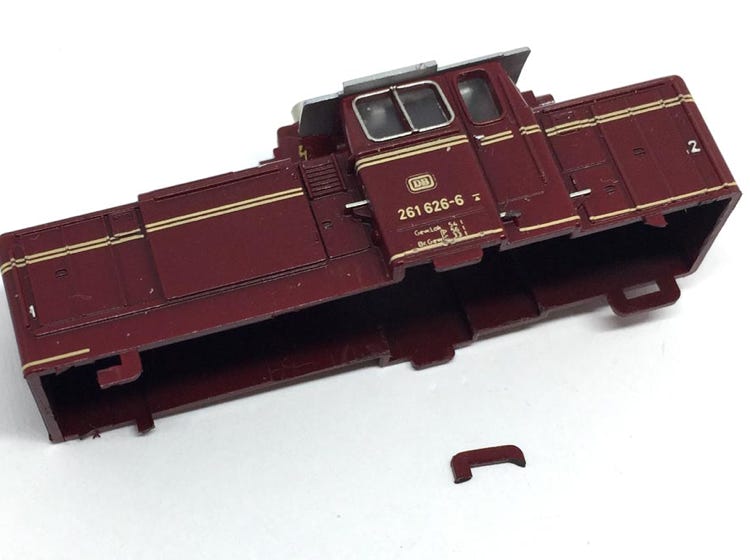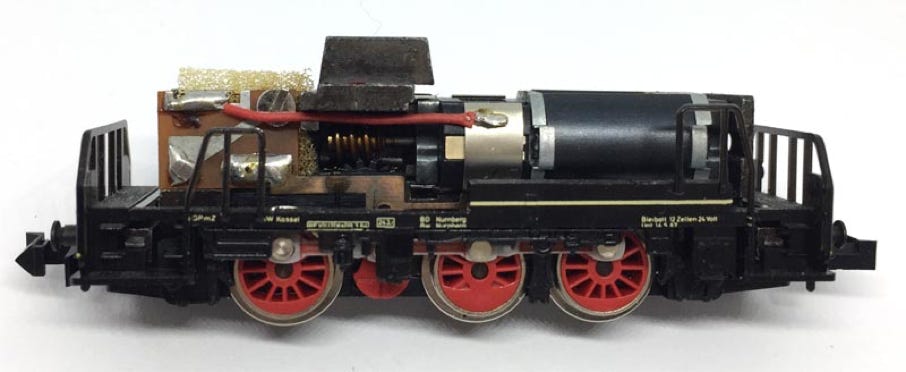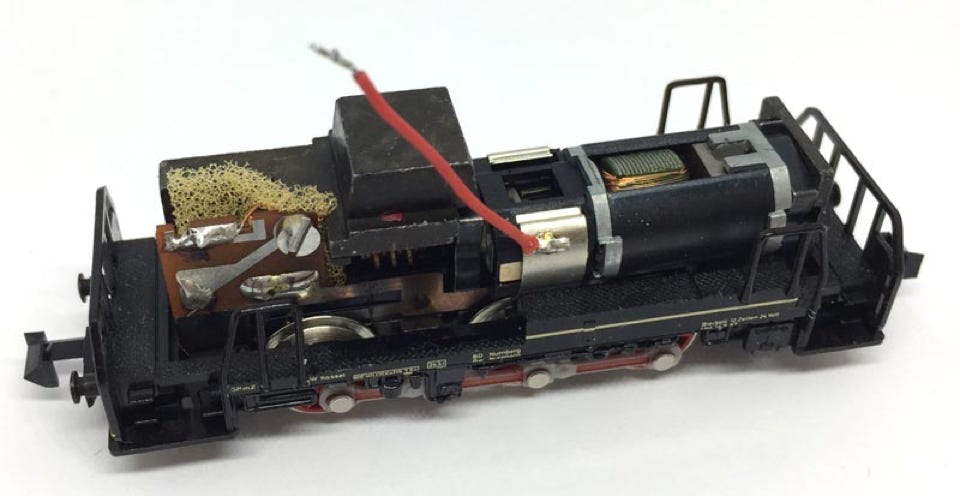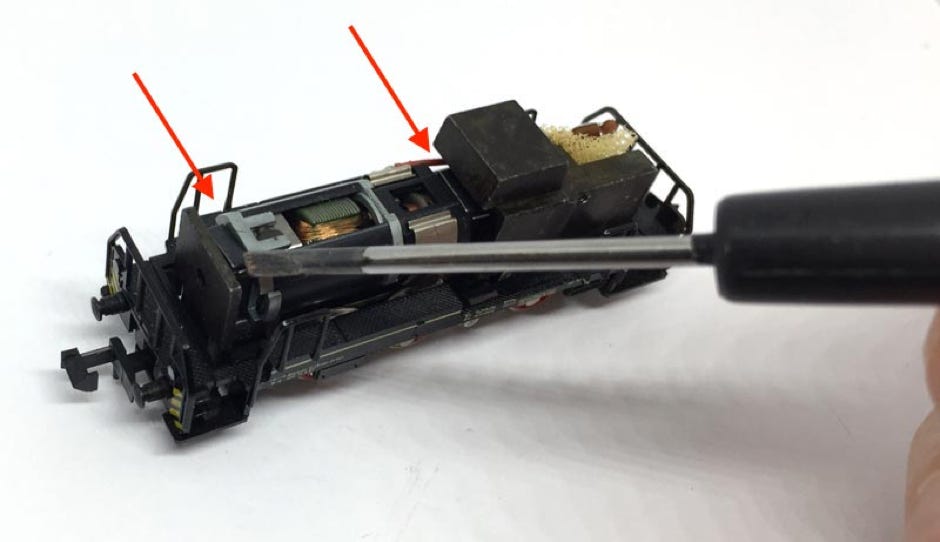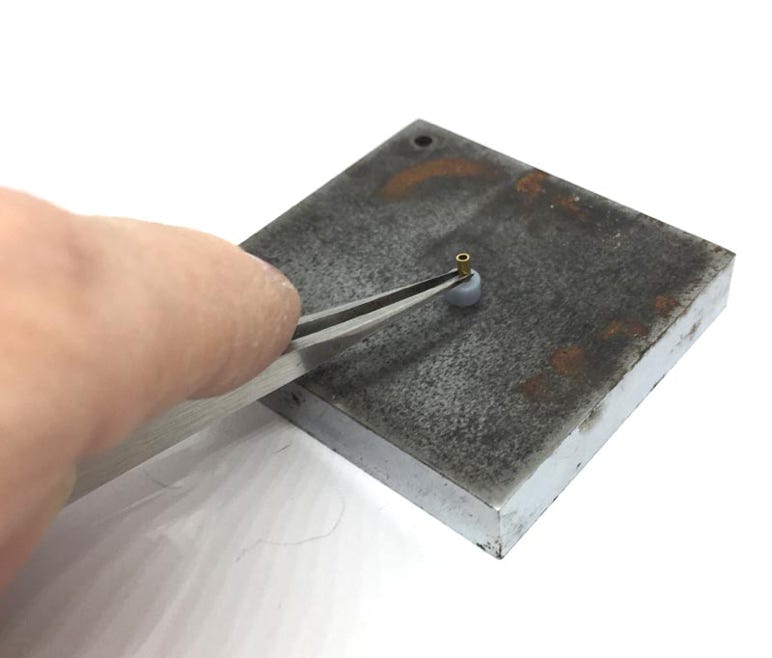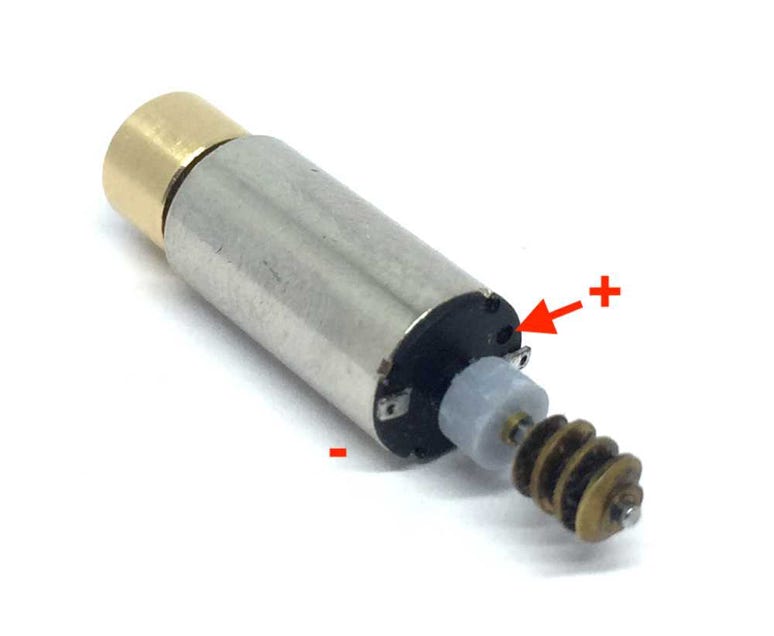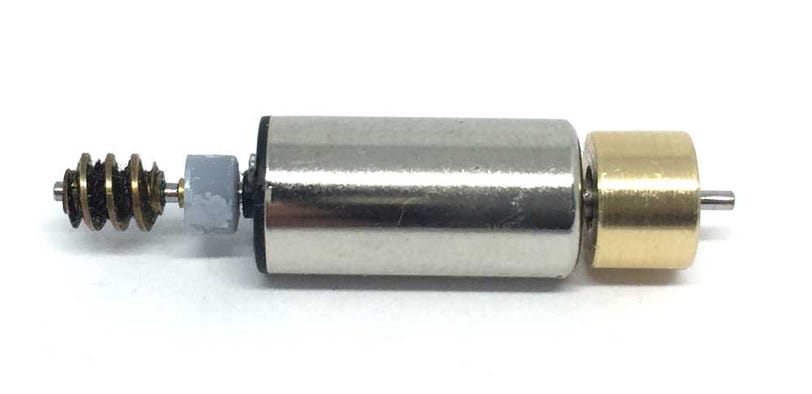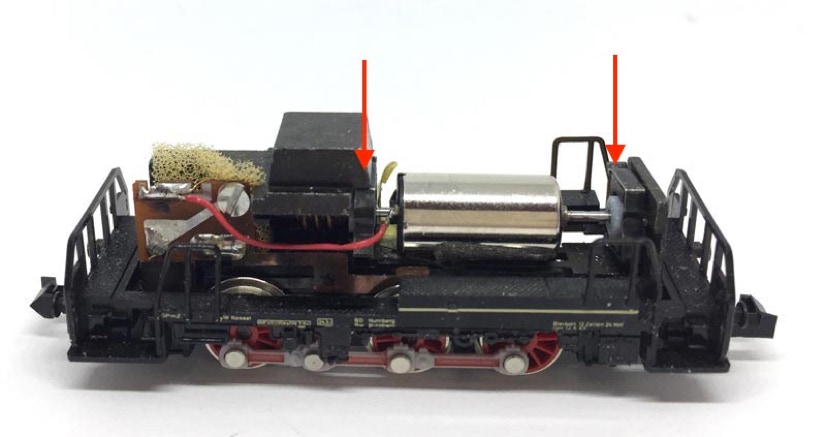Remove the worm from the original motor (do not use the Tramfabriek gear puller here, as most of the time, the worm is fitted too tight and you will break the pin. You’ll need to heat it up with a torch. For more valuable tips how to remove a worm, gear or flywheel, click here. If you find it difficult, you can order a worm from the Tramfabriek. Just contact me.
Then press the brass adapter in the original worm. Be careful with the adapter, the wall is only 0.1 mm thick. You might have to clean out the worm to make room for the adapter.
